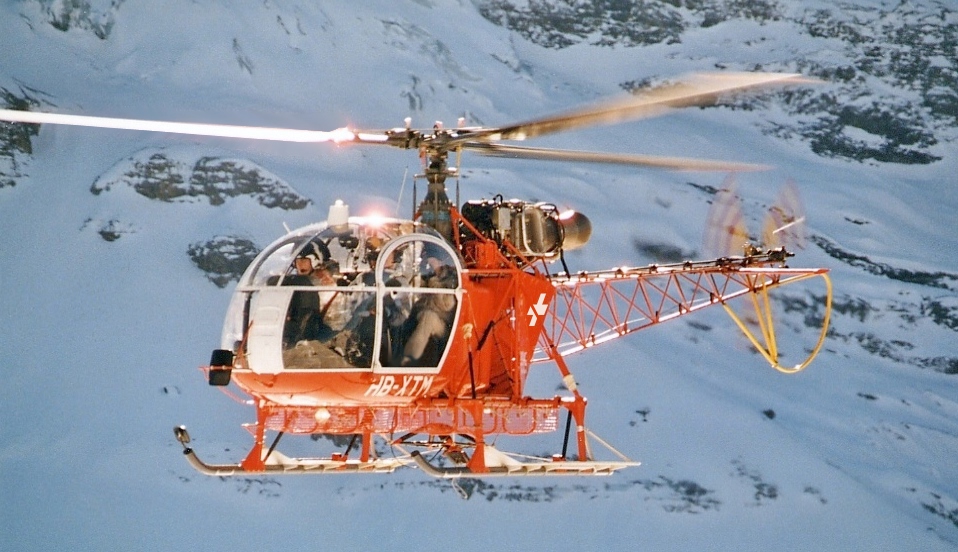Performance: Aérospatiale SA 315B Lama
Performance: Aérospatiale SA 315B Lama¶
The Aérospatiale SA 315B Lama was known for its superior high altitude performance and was the go-to helicopter for high-altitude operations in all the high-altitude mountain ranges in the world. The requirements of high altitude operation are relatively simple and can be inferred from the basic physics encountered within the scope of the momentum theory and blade element theory. Operating a helicopter in hover mode in high altitudes implies that the induced velocity would be high, which implies a correspondingly large power requirement. So it is apparent that the installed engines would need to have a high power rating. However, just increasing the installed engine power is not a sure shot solution since the rotor blades stall needs to be avoided before peak operational altitude is achieved. Recall the expression derived using BET-

Aérospatiale SA 315B Lama [source]
In order to fly at high altitudes, the rotor needs to operate at a higher \(C_T\) for the same MTOW. This is because \(C_T\) is a function of the atmospheric density. Clearly, the quantity on the RHS in the equation above needs to increase with altitude - \(\theta\) being the only variable that can be directly influenced. Beyond a certain \(\theta\) the blades stall and no further increase in \(\theta\) leads to an increase in rotor thrust. Consequently, for high altitude performance the rotor needs to be designed such that there is large margin between the required pitch angles of the blade required to hover at sea level and the maximum pitch angle before the blade stalls. This can be achieved by a judicious choice of the airfoil (higher \(C_{l_{\alpha}}\)), or increasing the number of rotor blades or increasing the chord of the blades (higher \(\sigma\)).
Large mass flow through the rotor disk is key to hover efficiency of rotorcraft. A single powerful turboshaft engine, skids instead of wheels, a skeletal tail boom etc all minimised structural weight in case of the Lama. The high engine rating of 649 kW (de-rated to 410 kW) ensured that the helicopter had a substantial power margin - at 1500 kg of take-off weight and rotor diameter of 11 m, momentum theory calculations show that only about 116 kW of power is needed to maintain hover at sea-level.
from IPython.display import YouTubeVideo
YouTubeVideo('43-TwXkNtuc', width=1000, height=600)
